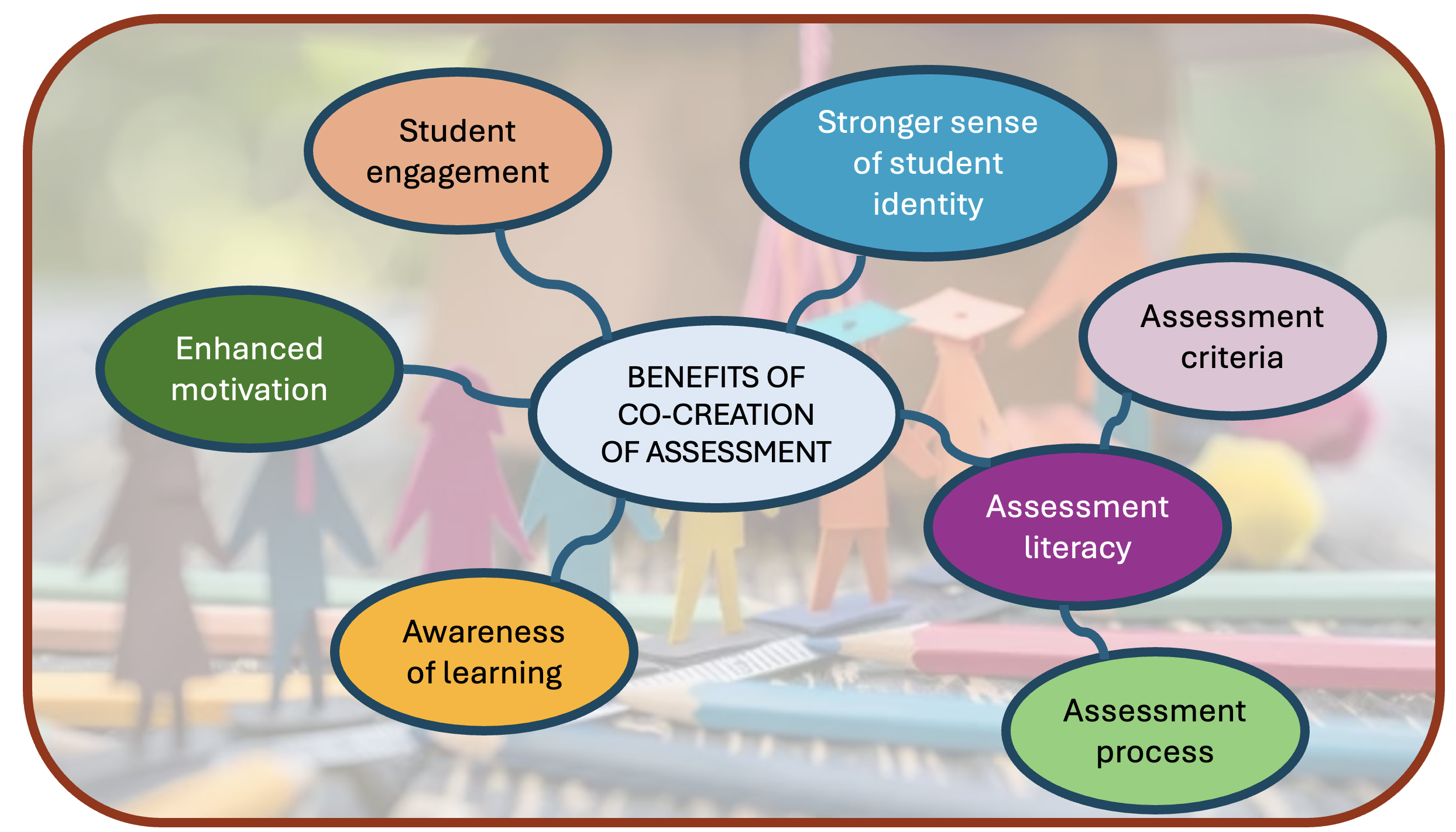Co-Creation in Assessment
Getting Started

Engaging in dialogue with students about assessment facilitates a shared understanding of assessment. It is evident that when working on co-created assessment and feedback projects with students, this creates opportunities for students to voice their understandings of assessment and share in decision making regarding assessment purpose and design, enhancing literacy via mutual discussions of standards, criteria and feedback.
Students can gain a better understanding of the assessment process – becoming assessment literate in the process and adjust their focus to be more on their learning rather than just their grades. It is also evident that it enhances the development of their skills and their assessment performance overall.

Ways to Foster Co-Creation in your Assessments
Co-creation of assessment with students may include a range of ways to work more closely with students in areas that can enhance student engagement. Some of these areas are listed here:
- Designing marking rubrics: students can take ownership of their learning by defining standards. See the Deeper Dive below for more information about staff-student co-creation of marking criteria.
- Designing MCQs (Multiple choice questions): students undertaking the Peerwise initiative in 12 schools across the University have the chance to pose example questions that their fellow students answer anonymously; questions are given marks and the students are able to see how effective and accurate their questions may be.
- Co-assessing presentations: students award themselves a grade and the tutor also awards them a grade. The tutor then meets all the students individually to agree upon a final grade. This encourages the students to negotiate and articulate a rationale for their performance. If they can’t reach agreement on the grade, the tutor retains responsibility for awarding a final grade, but is transparent and open with students about the rationale for decisions.
Deeper Dive
Read more
- This page, by Bournemouth University, describes the co-creation of assessment tasks applied to two of their modules, as well as the lessons learnt from this - including that there is no 'one-size-fits-all' approach possible!
- Read here about a project at the University of Cumbria where staff and students co-created assessment criteria, concluding that the staff version was too complicated, using opaque academic discourse, and the student version was too simplistic, and that criteria need to be made accessible to students - considering the question, 'Who are these [criteria] created for?'
- A co-creation approach to strategic enhancement of assessment and feedback in Nursing and Midwifery from the AdvanceHE Teaching and Learning Conference 2019 can be found here.
- The following videos provide useful information about using students as partners in the co-creation of assessment.
Cathy Bovill – Student Partnerships in Assessment:
Session 1A
Cathy Bovill – Student Partnerships in Assessment:
Session 1B
Session 2: Kelly Matthews
References
Bovill, C. (2020). Co-creation in learning and teaching: the case for a whole-class approach in higher education. Higher Education 79 (1).
Northumbria University (2019). A co-creation approach to strategic enhancement of assessment and feedback in nursing and midwifery: designing assessment support materials with students. Available at: Teaching and Learning Conference 2019: A co-creation approach to strategic enhancement of assessment and feedback in Nursing and Midwifery | Advance HE (advance-he.ac.uk) [Accessed:18 July 2022].
Share your feedback
Where Next?
Take your pick of these related pages to this one:
Principle 3: Partnership and Co-Creation
Feedback
Learning Enhancement
Authentic Assessment
Assessment Compendium
Learning Design and Preparing to Teach